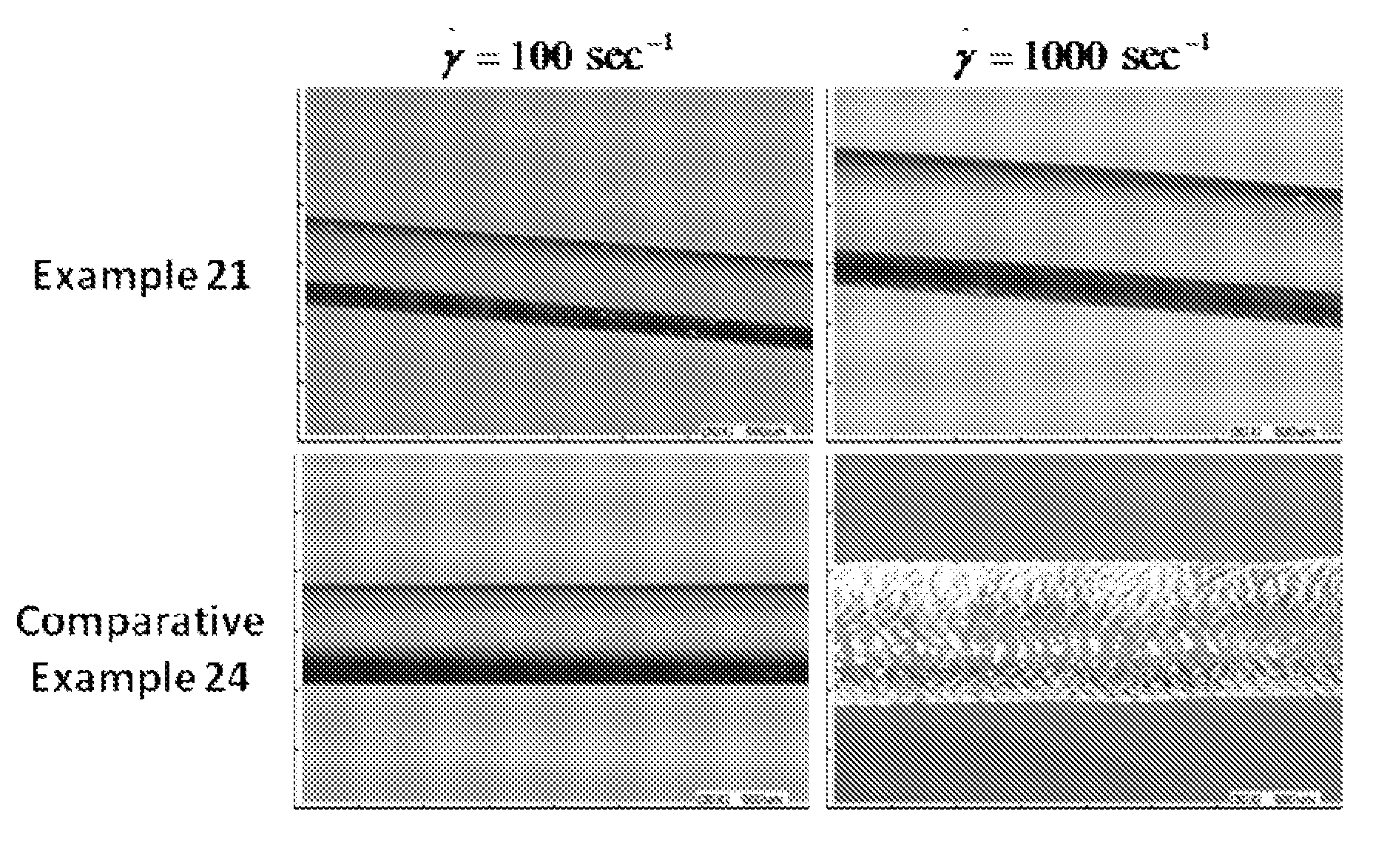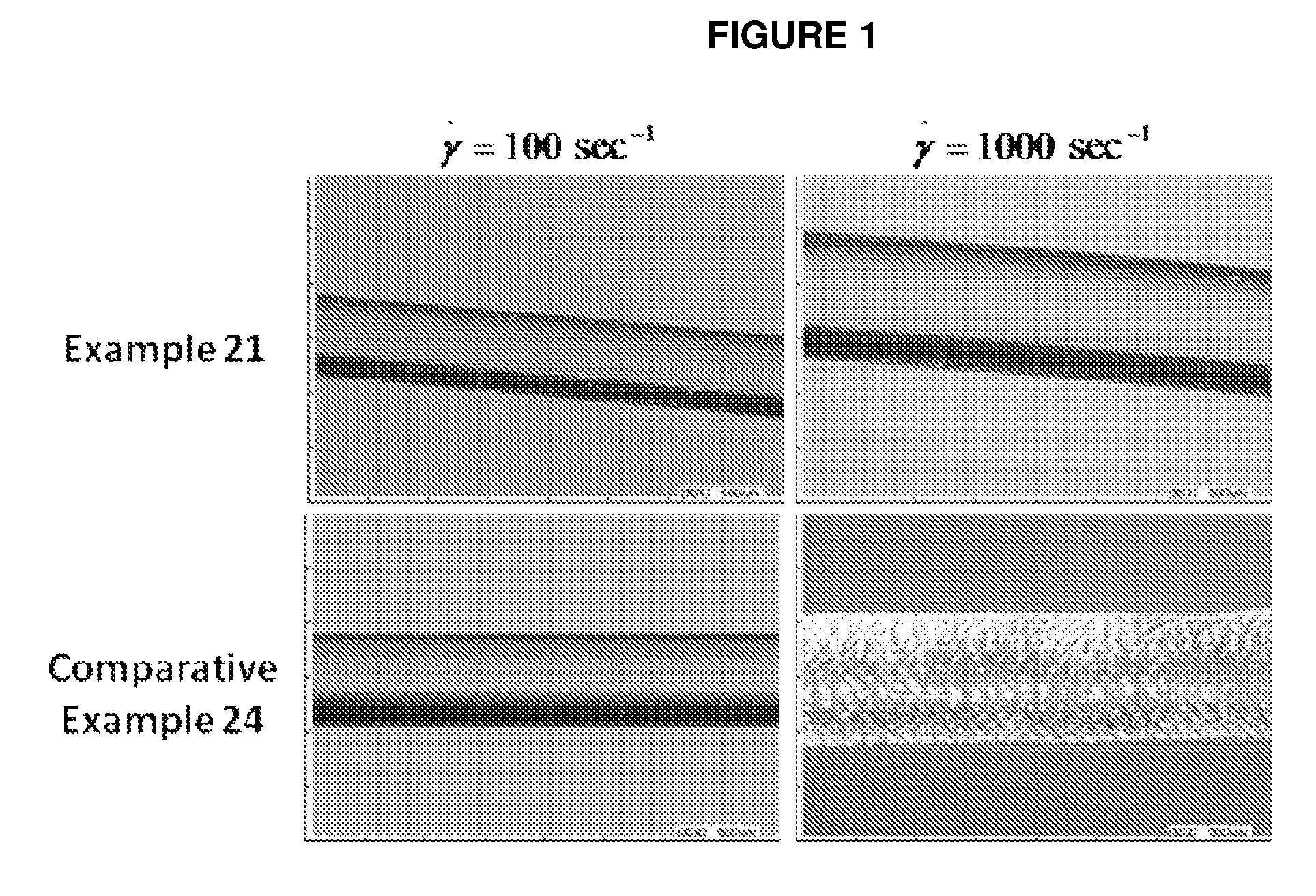Extrusion profile articles
a profile article and profile technology, applied in the field of polypropylene compositions, can solve the problems of inability to produce transparent bottles with through handles, limited isbm process, undesirable defects in transparent bottles, etc., and achieve the effect of high resistance to shark skin
- Summary
- Abstract
- Description
- Claims
- Application Information
AI Technical Summary
Benefits of technology
Problems solved by technology
Method used
Image
Examples
example 1
Comparative Example
[0672]This example illustrates the preparation of bottles using an extrusion blow molding process. The polymer used in this example contained 100% dimethyl terephthalate (DMT) as the dialkyl dicarboxylate moiety and a mixture of 69 mole % ethylene glycol (EG) and 31 mole % 1,4-cyclohexanedimethanol (CHDM) as the glycol component. The material also contained 0.18 weight % (0.20 mole %) trimellitic acid (TMA) moiety. The IV was 0.76 dL / g. The melt viscosity (MV) at 240° C. at 1 rad / sec was 45,777 poise. Neither a melting point (Tm) nor a crystallization half-time could be measured. Amorphous pellets of this composition were extrusion blow molded into bottles at a melt temperature of 230° C. (442° F.). The bottles were ground for dryer testing. A mixture of 3% flake of this composition in PET flake caused severe clumping in the dryer and completely stopped flow from the dryer. A blend of 1 weight % did not impede flow but did show moderate clumping.
example 2
Comparative Example
[0673]This example illustrates the preparation of bottles using an extrusion blow molding process. The polymer used in this example contained 100% DMT as the dialkyl dicarboxylate moiety and a mixture of 50 mole % EG and 50 mole % CHDM as the glycol component. The material also contained 0.18 weight % (0.22 mole %) TMA moiety. The IV was 0.76 dL / g. The MV at 240° C. at 1 rad / sec was 47,058 poise. The Tm was measured to be 193° C. The crystallization half-time of this material was measured to be greater than 300 minutes at 160° C. Amorphous pellets of this composition were extrusion blow molded into bottles at a melt temperature of 230° C. (442° F.). Bottles were ground for dryer testing. A mixture of 15 weight % flake of this composition in PET flake caused severe clumping in the dryer and completely stopped flow from the dryer. A mixture of 10 weight % flake of this composition in PET flake impeded flow and showed moderate clumping. Molded plaques containing 10 w...
example 3
Comparative Example
[0674]This example illustrates the preparation of bottles using an extrusion blow molding process. The polymer used in this example contained 100% DMT as the dialkyl dicarboxylate moiety and a mixture of 89.1 mole % EG and 10.9 mole % CHDM as the glycol component. The material also contained 0.18 weight % (0.19 mole %) TMA moiety. The IV was 0.74 dL / g. The Tm was measured to be 224° C. This composition could not be extrusion blow molded. In order to prevent crystallization of the parison, the material had to be processed at a temperature above its Tm and at this temperature the melt strength was very low. This composition would need a much higher IV in order to improve its melt strength, but it would be difficult to manufacture this composition to a higher IV without solid stating it.
PUM
| Property | Measurement | Unit |
|---|---|---|
| concentration | aaaaa | aaaaa |
| haze | aaaaa | aaaaa |
| haze | aaaaa | aaaaa |
Abstract
Description
Claims
Application Information
 Login to View More
Login to View More - R&D
- Intellectual Property
- Life Sciences
- Materials
- Tech Scout
- Unparalleled Data Quality
- Higher Quality Content
- 60% Fewer Hallucinations
Browse by: Latest US Patents, China's latest patents, Technical Efficacy Thesaurus, Application Domain, Technology Topic, Popular Technical Reports.
© 2025 PatSnap. All rights reserved.Legal|Privacy policy|Modern Slavery Act Transparency Statement|Sitemap|About US| Contact US: help@patsnap.com


